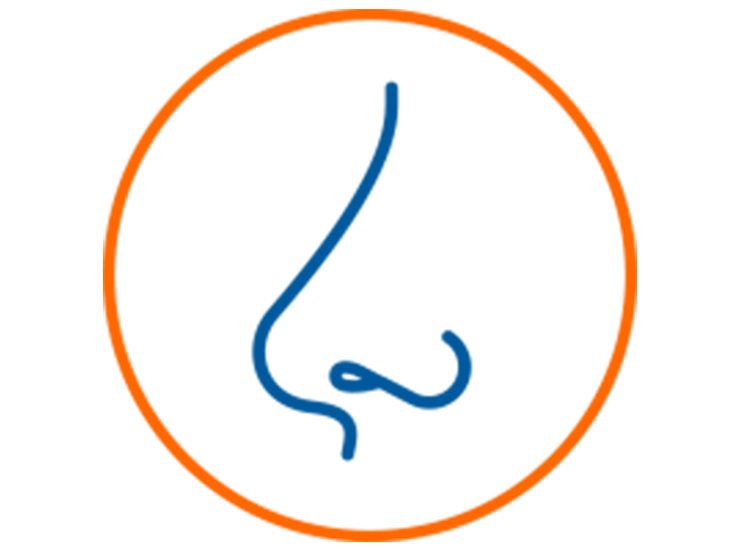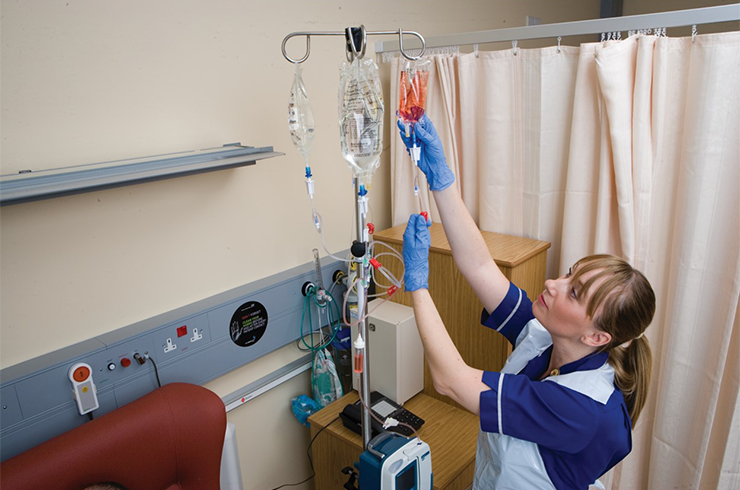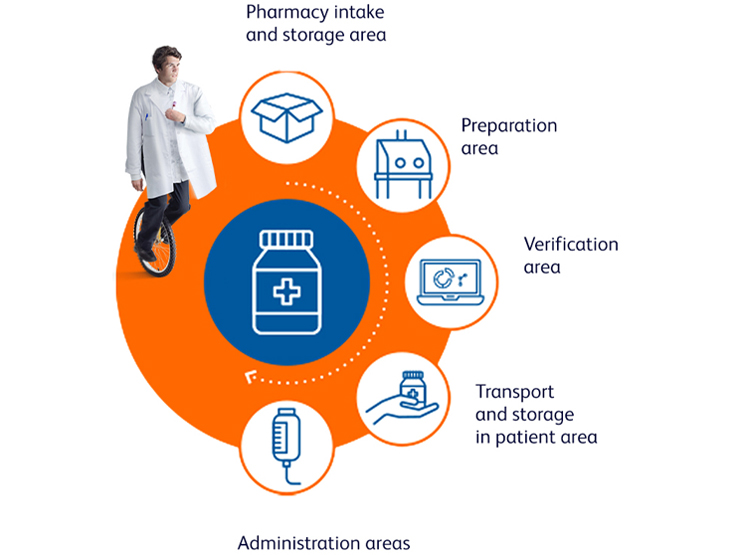Some risks are easy to spot.
Others are harder to see.
Hazardous drugs (HD) exposure occurs frequently in oncology departments4,5
The threat from hazardous drugs can come from anywhere they are present in your facility6

Do you know all the hidden places where hazardous drug contamination can spread in your healthcare facility?
Frequently contacted surfaces throughout the hospital have measurable levels of antineoplastic drug contamination6

61% of samples contaminated with ≥1 cytotoxic drug*4

61% of workers touched IV pump/bed controls while wearing chemotherapy gloves†8
*in a survey of 130 hospital pharmacies in Germany4
† in a survey of 1,954 healthcare workers8
Contamination may be found in:
- Surface, airfoil and floor in front of biological safety cabinet (BSC)
- Surface and floor in front of compounding aseptic containment isolator (CACI)
- Floors in pharmacy, pass-throughs (inside and outside, both for CACI and from inside the pharmacy)
- Countertops
- Equipment storage trays
- Drug vials
- Door handles, doorknobs
- Other high-touch areas
- Computer keyboard, computer mouse
- Nurse's station
- Medication room
- Intravenous (IV) bag storage areas
- Countertops
- Computer keyboard/mouse
- Floor of patient care area
- Floor of restroom
- IV pumps
- Patient's chairs
- Equipment
Hazardous drug contamination can spread easily, via:4,5

DERMAL CONTACT
By touching contaminated cabinets, flooring, countertops, and other surfaces9

INHALATION
Due to vaporisation of certain drugs such as cyclophosphamide, during normal handling5

INGESTION
When food or beverages are prepared, stored, or consumed in work areas9
Although invisible to the naked eye1, the risks of handling hazardous drugs are very real and serious
Providing life-saving treatments may put your own short- and long-term health at risk3

The risks of handling hazardous drugs are very real and serious:
Reproductive issues
Damage to internal organs
Increased rate of cancer
Genetic & developmental issues
Acute symptoms
- Double the risk of miscarriage among staff handling antineoplastic drugs10
- 5.6-fold increased risk of preterm birth among HCPs preparing ≥9 doses of chemotherapy per day11
- 4.7-fold increased risk of malformations among offspring born to Finnish nurses12
- Irreversible damage to bone marrow, liver, kidney and bladder13
- Increased relative risk of leukaemia among oncology nurses14-16
- 2.8-fold increase in non-melanoma skin cancer in pharmacy technicians16*
- 3.7-fold increase in non-Hodgkin's lymphoma in pharmacy technicians16†
† When a duration of at least 15 years of work was taken into account.
- 2.5-fold increase in total chromosomal aberrations among pharmacists and nurses who handle antineoplastic drugs17
- ~2.5-fold increased risk of learning disabilities (cognitive, motor, speech) among offspring11
- Exposure to hazardous drugs may also generate a wide spectrum of acute symptoms including mucosal sores, headaches, hair loss, dizziness, nausea/vomiting, skin/eye irritation8,13,18
Every single person in your hospital is at risk of hazardous drug contamination3
Everyone who comes into contact with a hazardous drug during transportation, preparation, administration and waste disposal is at risk of contamination3
DID YOU KNOW?
~1.8 million
workers in Europe are exposed to hazardous medicinal products19


- Pharmacists
- Pharmacy technicians/nurses
- Drug administration nurses
- Other care staff
- Waste managers/carriers
- Cleaners
- Maintenance personnel
- Patient relatives/visitors
- Other hospital staff
Workers both with and without direct patient care responsibilities are at risk of contamination6,20,21
There is increasing recognition of the need to protect workers from the risks of hazardous drugs19
European Directive 431 on the protection of workers from the risks related to exposure to carcinogens or mutagens at work published in 2022 recommends:22
Regular risk assessment measures
Regular monitoring resulted in
56%
reduction in contamination levels4‡
Preventative measures
Up to
93%
reduction in the risk of work environment HD contamination with closed system drug transfer devices23§
‡ in a surface wipe sample study (N=1,269)4
§ compared to traditional preparation techniques23
Start protecting yourself today, check out the solutions brought to you by BD to help break the vicious cycle of hazardous drug contamination
The occupational risk from exposure to HD is unacceptable and avoidable22,24
Providing life saving treatments should not mean risking your own health
It's time to put yourself first and be more protected from hazardous drugs
Let's have a conversation



